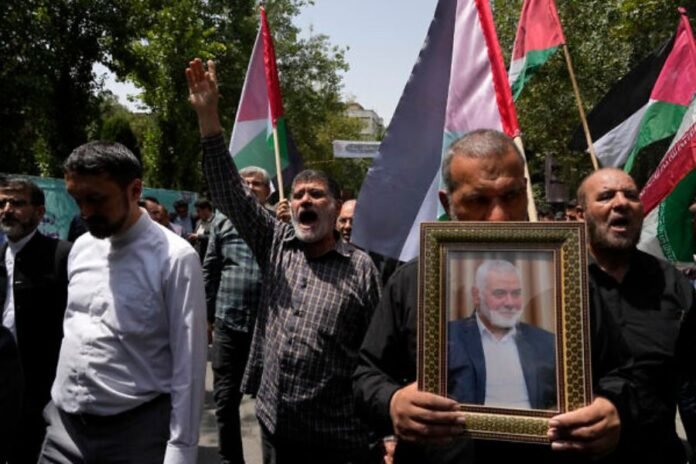On Wednesday, August 7, a key Hamas leader named Ismail Haniyeh was slain in Tehran. He was in the city to witness Iranian President Masoud Pezeshkian’s inauguration when the incident happened. While Israel has remained mute on the matter, Hamas and Iran have both accused Israel of carrying out the assassination.
The leading Hamas negotiator, who headed the political mission to Qatar, was reported to have been assassinated by a “airborne projectile,” but more recent sources indicate that he was murdered by an explosive device that was carried into the guesthouse of the official residence of the Iranian government.
Planning for the horrific assassination took two months, and the compound was under constant observation. The explosion that killed Haniyeh happened on August 7 at about two in the morning local time, according to a story from The New York Times.
Staff members at the guesthouse, including a medical team, were perplexed by the loud noise and quickly went to investigate. They went into Haniyeh’s room, where he was being hosted along with a bodyguard and found both in a pool of blood. Immediately after declaring Haniyeh dead, the medical team tried to resuscitate the bodyguard, but to no avail.
In addition to shattering windows, the explosion partially collapsed the complex wall. The leader of the Palestinian Islamic Jihad, Ziyad al-Nakhalah, was staying next door, and his room was not badly damaged. This suggests that Haniyeh’s murder was meticulously planned.
Three Iranian officials were informed immediately after the execution, including General Ismail Ghaani, the commander of the Quds Force, which works closely with Iranian allies such as Hamas and Hezbollah.
He notified Iran’s top leader, Ayatollah Ali Khamenei, in the middle of the night. It took four hours for the assassination of Haniyeh to be officially announced.
Also Read: How can Iran avenge Hamas chief killing by Israel?
Confusion over Hamas leader’s murder
According to Hamas’s original announcement, Haniyeh was killed by a “airborne projectile.” Additionally, three missiles fired by a drone from outside Iran were reported by Iranian media.
The most recent information, however, points to Haniyeh’s death being the result of an explosive device that was surreptitiously brought into the guesthouse where he was lodging.
Seven West Asian officials, including two Iranians, and an American official speaking on condition of anonymity were quoted by The New York Times as saying that the explosive device had been concealed in Haniyeh’s guesthouse bedroom two months beforehand.
The guesthouse is run by the Islamic Revolutionary Guards Corps and is located in the upscale Neshat compound in northern Tehran. The hotel was where Haniyeh spent several times during his visits to Tehran, the West Asian officials told the New York Times.
The stunning assassination required months of preparation and involved close compound surveillance. Offiials in Iran have confirmed that the bomb was a sophisticated device guided by artificial intelligence.
The NYT report also cited two Iranian officials who were briefed on the attack by a member of the Guards, stating that the assassination’s accuracy and sophistication resemble Israel’s 2020 use of a remotely operated artificial intelligence robot to kill Mohsen Fakhrizadeh, Iran’s top nuclear scientist.
According to the IRGC, an investigation into the incident has begun.



